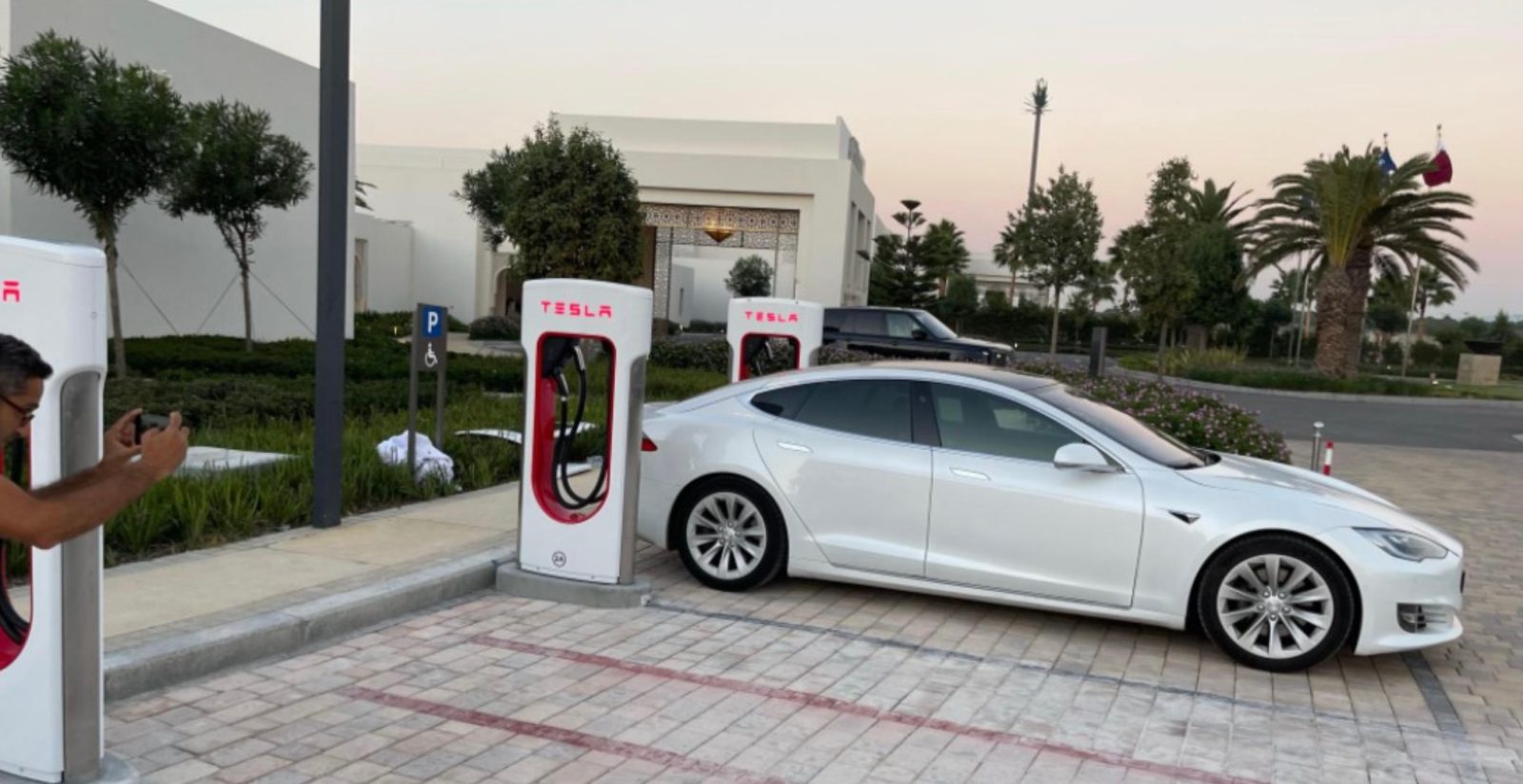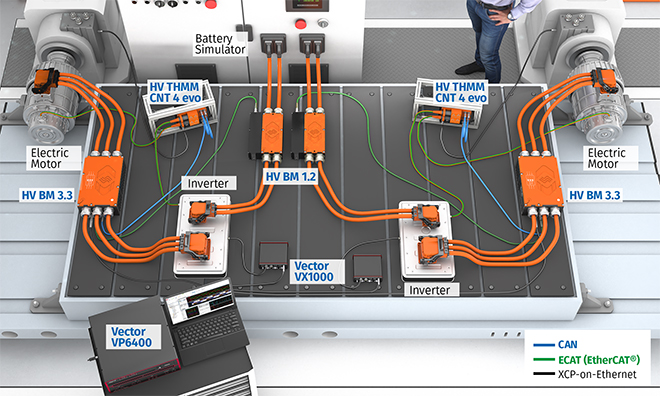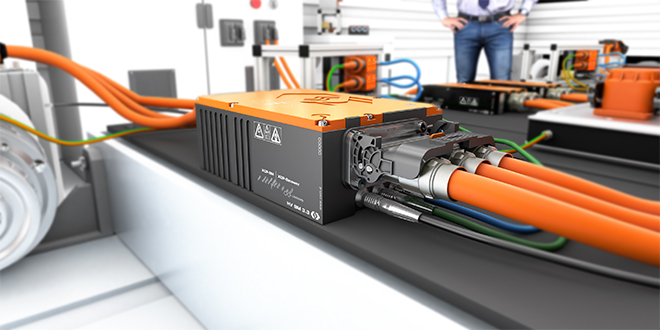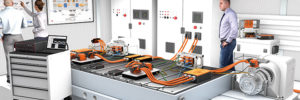Episode 78.
Source: Electric Vehicle News
Tesla enters African market with its first Superchargers

Tesla has deployed its first two Supercharger stations in Morocco, marking its first entry in the African market.
Supercharger stations are generally the first step toward Tesla entering a new market.
The post Tesla enters African market with its first Superchargers appeared first on Electrek.
Source: Charge Forward
Simplified power analysis on multiple electric motor powertrains
High-performance electric vehicles run with two, three or even more electric motors in the powertrain. Tuning the motor control is complex and requires precise performance analysis in order to test the desired driving characteristics. Early in the development process, the interaction of the individual inverters and electric motors is analyzed on powertrain test benches and in test vehicles. For this purpose, all power flows between the components have to be analyzed in real time with the raw data recorded.
Background
The driving characteristics are essentially determined by the architecture of the powertrain: Do two e-motors work on the rear axle or one e-axle each at the front and rear? In the future, there will be a wide range of variants, up to 4 motors for high-performance vehicles.
Performance analyses show whether the engine management system executes the control of the individual motors as expected during rapid changes of acceleration, braking, recuperation and reactions during load jumps or under full and partial load.
In further development phases, pre-defined test drive cycles are used to verify the performance data and the integration of the powertrain in the overall vehicle. The power measurement technology must be installed in the vehicle in order to be able to perform the measurements on road-to-rig test rigs and on the road. The measurement system must be able to operate independently in logger mode and also be integrated into the automation of test benches.
Challenge
The test bench measurement instrumentation shall perform both the measurement of all physical parameters and the simultaneous acquisition of ECU data with a harmonized measurement system. The measurement system must therefore include multi-channel, synchronized, electrical and mechanical performance analysis, as well as simultaneous high-voltage safe temperature measurement to analyze whether components are operating within the specified temperature range. All values must be calculated in real time in order to be able to directly detect fault reactions online at the control room or in the vehicle.
Special requirements are placed on power analysis: In all AC lines to the electric motors, the effective power of the individual motor windings must be determined in order to validate the wheel-specific control of the inverters. For accurate power analysis, the measurement data must be acquired synchronously. Especially current and voltage measurements must be phase-synchronized to accurately calculate electrical power in real time.

The Vector CSM E-Mobility Measurement System Solution
With the E-Mobility Measurement System, complex powertrains can be easily instrumented, and are scalable, for power measurement.
Active High-voltage Breakout Modules (HV BM) are used for power measurement. The HV Breakout Modules synchronously measure the high currents and voltages directly from the inner conductor of the power cable via temperature-compensated shunt modules. At the same time, A/D conversion and protocol conversion to EtherCAT or XCP-over-Ethernet are performed on the shunt modules inside the breakout modules. The HV BM 1.2 is used for single phase DC before the inverter and HV BM 3.3 breakout modules are used to measure 3-phase AC after the inverter.
Figure 1 shows a power analysis on a drive train that has one E-axis at the front and one at the rear. High-voltage Breakout Modules (HV BM) are inserted directly into the high-voltage cables for power measurement. Two HV BM 3.3 measure the AC currents and voltages between the E-motors and the power electronics. Two HV BM 1.2 measure between the HV battery and the inverters. They are each networked via EtherCAT® with an HV BM 3.3 and synchronized in time. The HV BMs measure currents and voltages up to ±2,000 V / ±2,000 A.
The power measurement circuit is already installed in the HV Breakout Modules 3.3. The AC phase currents (I1, I2, I3) are measured directly, and the AC phase-to-phase voltages between the phases (U12, U23, U31) are measured synchronously. Sampling is performed at 2 MS/s in each case.
Two CNT4 evo counter modules are used to acquire speed and torque at the axle shafts for mechanical performance analysis. High-voltage safe temperature measurement is performed with HV TH MiniModules (HV THMM). The modules are connected as a measurement chain via CAN and also networked with the HV BM 3.3. These work as gateway for all connected EtherCAT® and CAN measurement modules. A wide range of measurement modules for HV-safe measurements can be easily integrated for the acquisition of additional values.
Both HV BM 3.3 send the measurement data directly via XCP-on-Ethernet to the measurement computer or the Vector Smart Logger. Vector Smart Loggers are powerful and robust hardware platforms specially designed for time-synchronous parallel recording at high sampling rates of fast measurement modules, bus messages, video streams, radar raw data and ECU-internal measurement data in the vehicle.
A PTP grandmaster clock is included in this Smart Logger and the measurement modules are synchronized more precisely than 1 µs via PTP (PTP: Precision Time Protocol according to IEEE1588 standard).
The ECU data for power electronics and electric motors can be recorded via a Vector interface VX1000. The ECU data and the physical measurement data from the CSM measurement modules are synchronized with the Vector Smart Logger via PTP.

Vector eMobilityAnalyzer
The eMobilityAnalyzer is a standard library of pre-defined functions available in the popular software packages CANape and vMeasure exp from Vector Infomatik. It simplifies analyses in the development of electrified vehicles.
The eMobilityAnalyzer directly determines the efficiencies in real time from the measured raw data. This allows the load spectrum of the inverter and e-motor to be examined in detail, for example the efficiency in the various driving situations in the transition between acceleration, braking and recuperation, when the efficiency drops at low currents.
The energy flows are also analyzed to determine the energy consumption of the two e-axles during driving cycles. This allows fine-tuning of the motor control for different driving modes, driving dynamics and load conditions.
Benefits
The decentralized design of the E-Mobility Measurement System makes it easy to instrument test benches and test vehicles with the same measurement technology. Instrumentation and measurements in component and powertrain test benches are identical to those in test vehicles on vehicle and chassis dynamometers; thus a consistent measurement toolset throughout the development process
Multi-channel power analysis can be installed easily and quickly in powertrains with multiple electric motors, for example in all-wheel drive or utility vehicles. If, for example, a four-motor all-wheel drive system is to be analyzed, the measurement configuration can be doubled as shown in Fig. 1. The power analysis can then be performed on 4 engines and 4 inverters simultaneously. This means that even the most complex powertrains can be analyzed.
Read the full application example on www.csm.de/ev-usecase .
Source: Electric Vehicles Magazine
New HIU lithium-metal battery boasts 560 Wh/kg specific energy
Researchers at the Karlsruhe Technology Institute and the Helmholtz Institute Ulm (HIU) have developed a new lithium-metal battery that offers a specific energy of 560 Wh/kg with good stability.
The researchers used a low-cobalt, nickel-rich layered cathode (NCM88), which offers high energy density. With the commonly used organic electrolyte LP30, however, the stability is unacceptable. The researchers instead used a non-volatile, non-flammable ionic liquid electrolyte with two anions. With the NCM88 cathode and the liquid electrolyte, the lithium-metal battery initially has a storage capacity of 214 mAh/g, and 88% of the capacity is retained over 1,000 charging cycles. The Coulombic efficiency, which indicates the ratio between the withdrawn and supplied capacity, averages 99.94%.
“In the LP30 electrolyte, particle cracks occur on the cathode. The electrolyte reacts within these cracks and destroys the structure. In addition, a thick, moss-like lithium-containing layer forms on the anode,” says Stefano Passerini, Director of the HIU. The article Dual-anion ionic liquid electrolyte enables stable Ni-rich cathodes in lithium-metal batteries summarizing the research was published in the research journal Joule.
Source: Karlsruhe Technology Institute via Green Car Congress
Source: Electric Vehicles Magazine
Volvo Trucks and AMPLY Power collaborate on charge management programs for electric truck fleets
Charging and energy management provider AMPLY Power is collaborating with Volvo Trucks North America on customer programs to maximize uptime and cost savings for electric Class 8 heavy-duty truck fleets.
The companies are now working on projects with two heavy-duty electric truck fleets. One of these is Manhattan Beer Distributors, one of the largest beverage distributors in the country. The deployment includes five Class 8 Volvo VNR Electric models operating on distribution routes with heavy payloads and return-to-base operations. The trucks have a range of 150 miles and a battery capacity of 264 kWh, and take approximately 70 minutes to reach 80 percent charge.
“We are pleased to have AMPLY Power managing the charging operations for our new electric trucks,” said Manhattan Beer’s Juan Corcino. “As a leader in sustainable transportation for New York, we have long focused on minimizing the environmental footprint of our operations, and AMPLY’s charge management services help us further these goals cost-effectively.”
AMPLY’s charge management system covers everything from site design for efficient movement of vehicles in the depot to software and hardware that communicates with the grid and manages loads to optimize charging costs. AMPLY’s OMEGA software platform charges vehicles based on the fleet’s priorities, provides real-time alerts to help guarantee uptime, and delivers detailed Scope 2 emissions reporting.
“For these distribution truck fleets, uptime is mission-critical, and heavy payloads have to be guaranteed,” said Vic Shao, CEO and founder of AMPLY Power. “As such, we are focused on optimizing charging operations so that fleets experience the shortest charging times at the lowest cost possible.”
Source: Volvo Trucks North America via Transport Dive
Source: Electric Vehicles Magazine
GreenPower delivers 10 electric Cab and Chassis units to WeShip
GreenPower Motor Company (NASDAQ: GP), a manufacturer of medium- and heavy-duty EVs, has delivered 10 units of its EV Star Cab and Chassis to shipping service WeShip. The two companies secured California HVIP vouchers in the amount of $66,000 per vehicle, and GreenPower provided lease financing to fund the remainder of the purchase price.
GreenPower’s EV Star Cab and Chassis accommodates a wide variety of mid- and last-mile vehicles, combining a body of the customer’s choosing with GreenPower’s chassis. It offers a carrying capacity of up to 7,000 pounds and a range of 150 miles.
GreenPower builds a full suite of high-floor and low-floor vehicles, including transit buses, school buses, shuttles and cargo vans. The company uses global suppliers for key components, including Siemens or TM4 for the drive motors, Knorr for the brakes, ZF for the axles and Parker for the dash and control systems. “This OEM platform allows GreenPower to meet the specifications of various operators while providing standard parts for ease of maintenance and accessibility for warranty requirements,” says the company.
“We anticipated substantial demand would emerge this summer and fall with low lead times desired by customers. In response, we built substantial inventory across our product lines,” said GreenPower President Brendan Riley. “If you look at the turnaround time from purchase order through funding request and final delivery, you will see that nobody else in the space has demonstrated that type of efficiency.”
“This [sale] represents the first delivery leveraging California’s 2021 HVIP program,” said VP of Sales and Marketing Ryne Shetterly. “The re-opening of the HVIP program on June 6th has served as a significant sales catalyst across multiple GreenPower product lines, and we expect associated deliveries to accelerate further in the coming months.”
Source: GreenPower Motor Company
Source: Electric Vehicles Magazine
Refreshed Tesla Model X EVs Spotted At Fremont, Deliveries Incoming?
The sighting fuels expectations that volume production of the Model X Plaid and Model X Long Range will start this quarter.
Source: Electric Vehicle News
Tesla Vehicle Safety Report Q2 2021: Numbers Are Down Again
It’s the second consecutive quarter with a year-over-year decrease in the number of miles driven per one accident registered.
Source: Electric Vehicle News
Tesla Model 3 Driver Teases Gas Car Owners, Video Viral On TikTok
The fuel crisis is no laughing matter in the UK, and some gas car owners were pretty upset by this Tesla owner’s prank.
Source: Electric Vehicle News
Audi RS E-Tron GT’s Moose Test Result Is Just Okay
You weren’t expecting it to be better than the Taycan, were you?
Source: Electric Vehicle News





